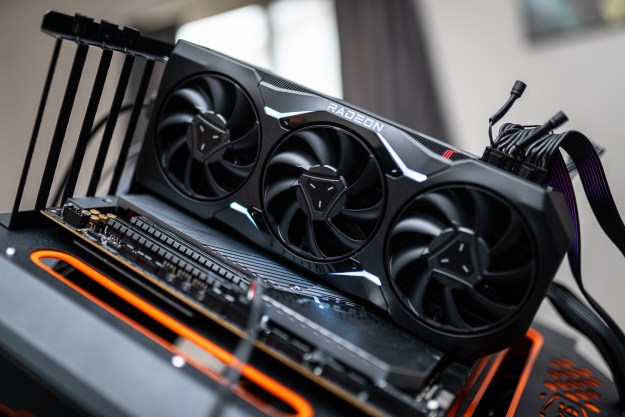We’ve known about the RX 480’s younger siblings, the RX 470 and 460, for quite some time. Details on the card’s performance, feature set, and price point – pretty much everything about the cards – were lacking. Today, the RX 470 launches in earnest, and the shroud is lifted on one of the new budget-friendly cards.
The beating heart of the RX 470 is 2,048 Stream Processors with a 926MHz base clock, and a 1,206MHz boost clock in the reference version. AMD has chosen a full four gigabytes of GDDR5 for the mid-range offering, clocked at up to 1,750MHz. AIB partners are also available in the typical selection of overclocked flavors.
This is, of course, a GPU based on the 14nm FinFET die size, in what AMD refers to as the Polaris architecture. That means a rich feature set, including DirectX 12 optimization, FreeSync, Eyefinity, and support for the new Vulkan graphics API.
Most of the offerings are full-length, double-wide cards. Our review unit happens to be a Sapphire OC with a reference-style cooler, and it’s 9.5 inches long, the same length as the RX 480, with the same short PCB and extended cooler. The 120W TDP means the card needs some help from a six-pin PCIe power connection. Like most cards, ours is equipped with an HDMI 2.0b port, and a trio of DisplayPort 1.4 outputs.
We have a full review coming early next week, but to tide you over until then, we do have a little taste to share from our ongoing performance testing. Installed in our X99 test system, the RX 470 scored 9,215 in 3DMark’s Fire Strike benchmark, about 14 percent behind the RX 480.
For the real-world gaming tests and comparative performance results, you’ll have to wait until next week. The card is available now for a suggested $179 retail price, just $20 short of the vanilla RX 480 – if you can find it. At publish, all five RX 470 models on Newegg, which cost between $179 and $240, are sold out.
Editors' Recommendations
- I tested AMD’s RX 7800 XT against Nvidia’s RTX 4070, and there’s a clear winner
- I wanted to try AMD, but it’s making it hard for me to switch
- AMD may soon launch a new GPU, but it’s probably not the one you think
- Nvidia GeForce RTX 4070 vs. AMD Radeon RX 6950 XT: a close call
- Nvidia RTX 4070 Ti vs. AMD RX 7900 XT: Two odd choices for your next GPU



